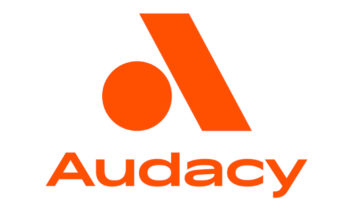WLRN expands its on-air services
Apr 1, 2005 12:00 PM, By Jack Yaghdjian
It’s no secret that National Public Radio affiliates have been among the most aggressive in the transition to digital and HD Radio. Along with access to a depth of material for Tomorrow Radio multichannel services, NPR stations have ongoing support from its leadership and the Corporation for Public Broadcasting (CPB). The CPB, a private, non-profit corporation created by Congress, funds more than 1,000 public radio and TV stations throughout the United States.
WLRN, a high-power FM operation based in Miami, is the pre-eminent NPR member station for South Florida. WLRN is a complex organization that reaches out to the community in variety of ways. A partnership with The Miami Herald, the region’s largest newspaper, provides additional material to the FM station for on-air news reports from new studios at the Herald, constructed by Harris. WLRN-TV is a complete TV facility with analog and digital channels, delivering PBS and other educational programming to local viewers and more than 350 area schools through 20 ITFS channels.
Where to begin
The radio portion of WLRN”s master control center features a Harris PR&E BMXdigital with analog and digital outputs, allowing the station to broadcast in HD Radio and analog FM.
All three production studios will transition to digital in the near future. This studio features a hybrid analog/digital Mackie audio mixer, although the output from the studio remains analog.
NPR and Herald reporters transfer stories to WLRN over a partitioned T-1 line using a Harris Intraplex STL-HD system.
In lieu of traditional routing systems, sources from the talk studio � which often originates live programming � are hard-wired to the master control console.
WLRN”s Radio Reading Service programming for the visually impaired is transmitted over a 67kHz subcarrier, which is monitored by a Belar RF monitoring system.
The transmission equipment was also part of the facility upgrade. New transmitters were installed to transmit analog and HD Radio signals.
The Network Area features recording and terminal equipment for WLRN”s radio and TV operations. Satellite IRDs receive and demodulate NPR feeds for immediate on-air playback, while various Sony and Tascam devices record other programs to air at a later time.
The radio leadership at the facility began mapping its digital radio plans several years ago. The launch of WLRN’s digital TV channel two years ago was a key motivating factor in the acceleration of the radio station’s transition. Management developed plans for the construction of a new, larger transmitter facility to house analog FM transmitters, and digital transmitters for radio and TV. A new master control center for radio and TV, including a refurbished FM studio and expanded terminal equipment ear area, was planned for WLRN headquarters. With the initial stages successfully completed, WLRN-FM is on the air digitally and prepared to move forward with Tomorrow Radio services. Harris provided systems integration services for the new TV master control; the digital TV, new analog FM and HD Radio installations and system design; and the entire HD Radio equipment package.
The new transmitter building is a 2,500-square-foot facility housing three Harris transmitters: Z6HDS digital IBOC, Z10 analog FM and a Sigma DTV for TV. The IBOC model replaces FM tube transmitters with a combined 33kW power output that served the station well for more than 20 years. The FM transmission core, antiquated and no longer reliable, was in dire need of replacement and yet another motivating factor to speed the digital transition.
A new 1,000 foot tower resides 150 feet from the old transmitter building. Complete with elevators and 250 feet higher than the station’s previous tower, the additional height and efficiency allowed for the best possible positioning of the new FM antenna. Although the station’s theoretical coverage area remains the same, with the new antenna and transmitter, actual coverage is significantly superior. The transmitter output is now 7.8kW compared to the previous output of 33kW � a massive reduction in wasted RF energy. The carefully planned directional antenna, which is central to that transmitter power output reduction, was designed so as not to waste energy over the Atlantic Ocean or the Everglades. Combined with new efficiencies in electrical power and greatly reduced maintenance costs for parts and labor, it all adds up to lower operational costs.
Other efficiencies have been discovered in the new digital operation. The extra space afforded by the transmitter facility design provides additional revenue-generating possibilities. Oversized air conditioners were added with the idea of leasing space to accommodate additional broadcasters. Everything on the tower has been oversized to accommodate additional transmission traffic. For example, six-inch transmission line is now being used instead of the three-inch lines that were previously installed. This provides additional capacity in our transmission lines to combine outside TV and FM broadcasters.
Among the more challenging decisions in the early design stages was the choice of HD Radio combining method. The station opted for high-level combining. This method made the most sense for WLRN from an operational standpoint. With a backup transmitter to come in the future, this method allows WLRN to easily incorporate its existing Dielectric switching system. The Dielectric unit is a specially designed, motorized RF system with three switches that provides an automatic switch-over to a backup transmitter should it sense a lack of power output from the main transmitter.
The main consideration in choosing high-level combining was to maximize the digital signal. High-level combining was selected because it uses the main FM antenna and has identical radiation characteristics between analog and digital signals.
WLRN uses several test, measurement and monitoring tools to ensure the health and functionality of the transmission systems. The Harris IBOC transmitter is monitored by two Bird BPM-1 wattmeter systems that provide power output and combiner performance readings. A Belar monitoring system picks up RF readings from the analog antenna and feeds them to workstations at the studio and transmitter facility. The performance of a 67kHz subcarrier that transmits WLRN’s Radio Reading Service programming for the visually impaired is also monitored over this system. And a Moseley remote control and monitoring system alerts staff to other potential problems at the transmitter facility by monitoring tower lights and other performance issues, such as utility power or standby generator.
Back at the ranch
The master control center at WLRN headquarters is dedicated to TV and radio operations. The main radio console is a Harris PR&E BMX Digital with analog and digital outputs. The hybrid digital and analog build features 32 inputs and outputs. The main analog and HD Radio channels can be monitored from the console, as can the station’s Radio Reading Service and live Internet stream. Tomorrow Radio services will also be monitored through the BMX Digital. The fact that one staff member can monitor all of these outgoing sources is another example of a more efficient workflow environment.
The hybrid nature of the BMX Digital provides additional flexibility because any source can be added to any bus. With this installation, WLRN has moved away from traditional routing systems in favor of a hard-wired approach. Operational mistakes are virtually eliminated in this system for a cleaner on-air broadcast. Patch panels surround the console so engineers can rearrange hardwired sources using XLR connectors.
Currently, the station’s BMX Digital sources include six channels of NPR programming that arrive via satellite and are sent directly to the console; three production studios; Electro-Voice microphones; a PC-based Dalet storage system; the Radio Reading Service; five ISDN lines with Telos Xstreams and several playback devices, including Sony CD players and Minidiscs. Studio cabinetry for playback devices and additional furniture was provided by Arrakis. Foam and spatial tiles were installed for acoustical considerations, although these will soon be upgraded to address HVAC noise and general soundproofing.
Behind the curtain
The terminal equipment room, referred to as the Network Area, is located next to master control. Five equipment racks house radio and TV equipment vital to daily operations. The radio terminal gear area is basic in its setup. NPR-provided satellite IRDs receive and demodulate the NPR feeds before passing them through to the studio console for on-air playback. Sony and Tascam DAT machines and Minidiscs were added to record certain programs directly off the satellite receivers.
Perhaps most important to the Network Area is the Dalet 33X audio server and editor storage system that has its own dedicated rack with a built-in cooling system. The Dalet server is the central hub for all WLRN radio programming. Various WLRN and Miami Herald studios can receive and record files directly into the server. These files are later recalled from the BMX Digital console for playback to air. WLRN is currently applying software upgrades to automate the server. For now, the files are retrieved manually by on-air operators.
A redundant Moseley Starlink SL9003Q digital STL provides the STL link at 32QAM. Everything produced at WLRN is sent through this system to the transmitter for delivery over the air. An underground fiber system using Lightwave Systems Fibox products sends the uncompressed digital signal from the studio into the STL unit along with the remote control, Radio Reading Service and future program-associated data (PAD). A Black Box Ethernet extender uses the same fiber path and feeds a Moseley Lanlink to interconnect the studios and transmitter with a 512kb/s Ethernet link, which we will use for Tomorrow Radio among other things. An analog signal is sent via a copper line in parallel with the digital signal for backup.
WLRN’s collaboration with the Miami Herald has vastly improved the station’s news output. Several small studios with Harris PR&E Impulse audio consoles for story editing are located at the newspaper’s headquarters. NPR and other organizational reporters can transfer stories to WLRN over a partitioned T-1 line using a Harris Intraplex STL-HD system. The Intraplex system has linear, bi-directional audio feeds between WLRN and the Miami Herald, separate channels for intercom and data, and WLRN also sends a return news channel so reporters can monitor the feeds. An additional editing suite with a complete Harris console and furniture package, ISDN line and microphone will be built soon to further accommodate the news department.
The line’s capacity is currently maximized, and the station is expanding the system with a backup T-1 line, adding additional Enhanced Apt-x audio and LAN paths. Adding the second T-1 line and new Intraplex equipment will make the data import and export much faster.
WLRN has been successful in working with a limited budget to obtain state-of-the-art equipment for our digital future. The station’s listening audience has increased as a result of improved services. The next transitional phases will involve three production studios that are still analog, along with adding more redundancy to all facets of the station and the eventual launch of secondary audio services. The Network Area is also being expanded with the NPR Content Depot, although those plans are currently in the earliest formative stages. Still, WLRN has come a long way in a short period of time, and is looking forward to future growth.
Yaghdjian is chief engineer of WLRN-FM/TV, Miami.
Equipment List
Arrakis studio furniture
Audiometrics DA16000-B
Belar RF monitoring system
Bird BPM-1
Blonder Tongue RF amplifier
Broadcast Tools ICM-16/MHI intercom system
Comrex DH20
Dalet 33X
Dielectric RF switching system
Electro-Voice RE27/ND
ESE ES-161UP
ESE ES-185A/HR
ESE LX5212
Harris Intraplex STL-HD
Harris Neustar
Harris PR&E BMX Digital
Harris PR&E Impulse
Harris rack cabinetry
Harris Z10 FM
Harris Z6HDS
Lightwave Systems Fibox DAT1-SL, IMS-TX
Middle Atlantic IOU
Moseley remote control and monitoring system
Moseley Starlink SL9003Q
Rolls RS 79B
Sony DAT and Minidisc
Sony SLV-N700
Symetrix 528
Symetrix 581
Tascam CD-RW2000
Tascam DA40
Tascam MD-801RMKII
Telos Xstream
Ward-Beck POD-12
Wohler Audio VM-2A












